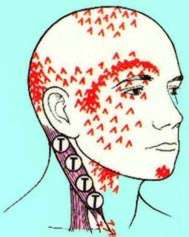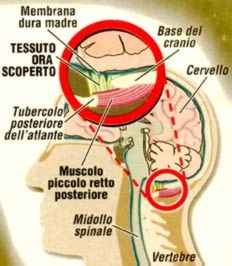|
|||||||||
|
|
|||||||||
| Headaches Enrico Grappiolo, M.D., M.S. |
||||||||||||||||||||||||||||||||||||||||||||||||||||||
|
Headaches,
in their various etiological forms, plague many people and may severely
change the quality of their life. If best treated, they may be reduced
and sometimes recover; therefore, it is extremely important to learn
to pinpoint the causes of this painful disorder and see a specialist
to determine, case by case, the type of headache you are afflicted
with, the risks for your overall health, the trigger causes and
which treatments exist for headache management and recovery.
In most cases, headache pain disappears easily: a short rest and an analgesic will be enough. In a few cases, however, the pain is rather recurrent and becomes so wearing for headache sufferers, that it might significantly change their lifestyle. It is therefore important to consult a doctor because, although the causative factors of this disorder are not yet quite clear, the remedies do exist: it is sufficient to understand which is the trigger cause of headache. An examination by your dentist gnathologist will then become important because some forms of migraine and "tension-type headache" - the latter being the most frequent - are predictive of bad mastication which, in medical terms, is known as "oromandibular dysfunction". Malfunction of the mandible may modify both the spatial posture of the head and swallowing, these actions being governed by muscle groups and tendinous insertions, head and neck joints and by the scapulohumeral girdle which, when overstrained, become painful. Dental malocclusion causing an anterior or simply bent or sideway-turned head posture, will cause abnormal contraction of neck and mandible musculature which - it's worth reminding - in a few cases insert into the temporalis. This chronic muscular fatigue will result in a not well localized aching pain which, in our case, may be located midline in the head, temples, forehead and nape. For example, overstraining of the sternocleidomastoid, a postural muscle of the head, will cause a referred pain in various areas of the head. |
||||||||||||||||||||||||||||||||||||||||||||||||||||||

|
A gnathologic treatment aimed at restoring normal activity of these muscles may often be successful. Furthermore, a tissue has recently been found connecting a small muscle at the base of the skull, which inserts onto the first cervical vertebra and the dura mater, i.e. the fibrous membrane forming the outermost covering of the brain. The result would be that - when tense - it might produce an irritative spine at endocranial level triggering a migraine-like headache. |
|||||||||||||||||||||||||||||||||||||||||||||||||||||
|
The
sternocleidomastoid muscle (violet) may cause a referred pain in
all areas marked in red. Its stimulation (compression) in points
T may trigger a referred pain
|
||||||||||||||||||||||||||||||||||||||||||||||||||||||
|
Tests conducted on this anesthetized muscle seem to have obtained
headache pain remission. This muscle called rectus capitis posterior
minor, is an active part of the chain of muscles involved in head
posture on the neck. We have then seen that if the face and neck
muscles are continuously overstrained to keep the head and mandible
in particular non-physiological postures, this may trigger headache
through various mechanisms. But this is not all. Headache pain caused
by neck disorders, especially involving the intervertebral disks
and the cervical vertebrae have been long since known. These headaches
are reported as follows: "pain localized in the neck or in the
posterior part of the head spreading to the forehead, eye, temples,
upper part of the head and ears: it is triggered or exacerbated
by particular movements of the neck or by a protracted poor postural
behaviour". Specific X-ray examinations often reveal pathologic
signs such as: postural, flexion- -extension anomalies, fractures,
neoplasms, congenital anomalies and rheumatoid arthritis.
|
 |
|||||||||||||||||||||||||||||||||||||||||||||||||||||
|
Musculus
rectus capitis posterior minor
|
||||||||||||||||||||||||||||||||||||||||||||||||||||||
|
Cluster headache, too, - so called because it occurs in particular
periods and with recurring frequent episodes causing a stuffy or
watering nose, sneezes, eye reddening - may be symptomatic, caused
by osteoarticular lesions involving the first two vertebrae of the
neck. This stresses the importance that everything must be properly
working, without causing injury to the head-bearing structures.
Migraine and tension-type headaches may be reduced by a gnathologic
treatment. Therefore, a dental examination becomes even more important
to diagnose whether a prospective oromandibular dysfunction may
affect the dynamics of the cervical spine which might cause or worsen
painful conditions of the neck musculature and trigger headaches.
In case of a headache caused by not severe general diseases or brain
lesions, the doctor will attempt to understand the nature - either
vascular or muscular - of the trigger factors, because a headache
triggered by the latter may have more chances of reduction if a
dental treatment is performed. In conclusion, although it is true
that headache, myofacial or pericranial muscle pain have a multifactorial
etiology, your dentist may help pinpoint the causes of your disorder.
Moreover, in case of a cephalalgic edentulous patient, the dentist
will first suggest an occlusal mobile or temporary rehabilitation
if his/her posterior teeth are missing, or a periodontal treatment
aimed at providing stability and non-painfulness of the dental elements
or he will remove the teeth macroscopically hampering the mouth
function. The dentist will instruct these patients not to aggravate
TMJ instability, in case they had to undergo a prosthetic treatment
or cures that might overstrain the temporomandibular joint, like
for example extraction of the wisdom teeth or long-lasting sessions
for devitalization of a molar.
|
||||||||||||||||||||||||||||||||||||||||||||||||||||||
|
||||||||||||||||||||||||||||||||||||||||||||||||||||||
|
||||||||
